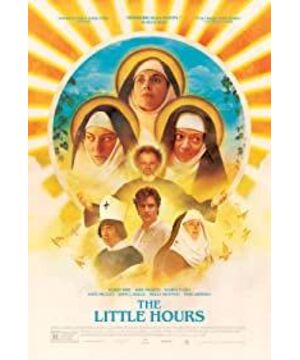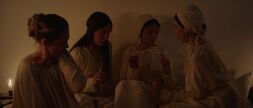Foreword: Due to Xunlei's more and more restrictions on downloads recently, during the process of downloading this film, it encountered an error and could not download it. Later, I inquired about a strategy to avoid Xunlei's server query. As a result, the computer system crashed accidentally. The win7 system in 2009, distressed the old computer at home for a few minutes.
I originally wanted to find a dirty and explosive film to relax, but I never thought that the film was a theme film with a crazy appearance. In all honesty, this is not a good movie. It is very average, with some advantages, no bright spots, and full of grooves. If you haven't watched it yet, it is very not recommended. But now that I've seen it, I still have to write about some of my feelings.
The film tells the story of medieval Europe. To be precise, the story happened in 1384. At this time, Europe was in a period of gradual decline in the Middle Ages and the beginning of modern times. It was also the accumulation and enlightenment stage of the European religious reform. This year is actually a very important year in the history of Christianity, or a very important year in the process of the Reformation. It was in this year that John Wycliffe of the United Kingdom translated the Bible into English vernacular. It promoted the popularization of Christian laws and effectively promoted the development of the religious "popular sovereignty" movement.
Such age and background provide a good basis for the film's story content and religious conflicts. There are two main scenes in the film, the noble castle and the monastery. It must be said that the construction of these two scenes and the surrounding scenery is one of the rare advantages of this film. Castles, courtyards, forests, and meadows integrate the desolation and remoteness of the Middle Ages into the natural beauty. Connecting these two main scenes is a bridge, which in the film plays a very symbolic role, a passage and a boundary.
The hero of the story is the servant of the noble lord in the castle. The lord is stupid, greedy, cruel, and most importantly, very boring, which is also a symbol of the society at that time. It was this boredom that led the lord's wife to hook up the handsome manservant to bed. Unfortunately, the adultery was revealed, and the manservant had to give his life to escape. Across the meadows and forests, he crossed the bridge connecting the secular and the religious, and came to the dilapidated monastery.
The monastery was home to priests, elder abbots, and various nuns, and the ruined monasteries were maintained by grants and embroidery sales. Three nuns with different characteristics are the protagonists here. Sister Asia is from a wealthy family. Her father is the main sponsor of the monastery, but he sent her to the monastery regardless of her daughter's happiness. She embroidered with an old nun in the monastery. However, this is not the life she wants. What she needs is love and marriage. She said sadly: Seeing the old nun seems to see her future self. Sister Fei has a fierce personality, and has some friends outside the monastery. She loves freedom uninhibitedly. Sister Shuo is diligent and hardworking, but she is also cautious. She will make various small reports to the dean, and at the same time she is full of love for Sister Fei.
The arrival of the male servant made waves in the monastery, which was calm on the surface but already turbulent. Sister Asia and Sister Fei approached the male servant by various means, hoping to make them happy. The curiosity of the opposite sex does some silly things, but it is a pity that every time it is interrupted by various situations at critical moments (hate the director and screenwriter). The development of the situation gradually got out of hand. It happened that the inspector of the church came to check the condition of the monastery.
The church inspector reprimanded the three nuns, the abbot and the priest one by one. The priest was expelled from the priesthood, the three nuns were punished by fasting, and the servant was sent back to the castle. Everything seemed to be in order again.
Under the shackles of the monastery and the entire theological environment, the nuns are sad, restless, restless, and eager for real life. They have their own ways of fighting every day, crying, beating the gardener, getting drunk, sneaking out, etc. The arrival will completely stimulate and intensify these expressions, and of course, further suppression and imprisonment will be ushered in.
It is commendable that at the end of the film, three nuns put on night clothes and sneaked into the castle to rescue the servants, and the four escaped from the castle happily. The abbot left the monastery to meet the excommunicated priest. The meeting place was on the connecting bridge, and the four young men and women also happily passed the bridge.
At this moment, the secular world and the religious world are connected, and the true brilliance of human nature illuminates the world on both sides of the bridge. All the rules and shackles can't help people's yearning and pursuit for freedom and beauty. People under shackles will eventually fight and be freed, and the souls of the shackles will break out of the cage.
In the following 200 years, through the religious reform movement and the Renaissance movement, European humanistic thought finally broke out into a butterfly and became brilliant. Society has also completed the transition from the Middle Ages to modern times, and everything is rolling in...
View more about The Little Hours reviews











